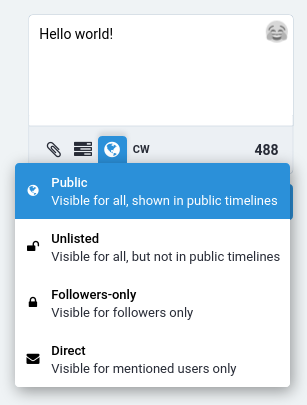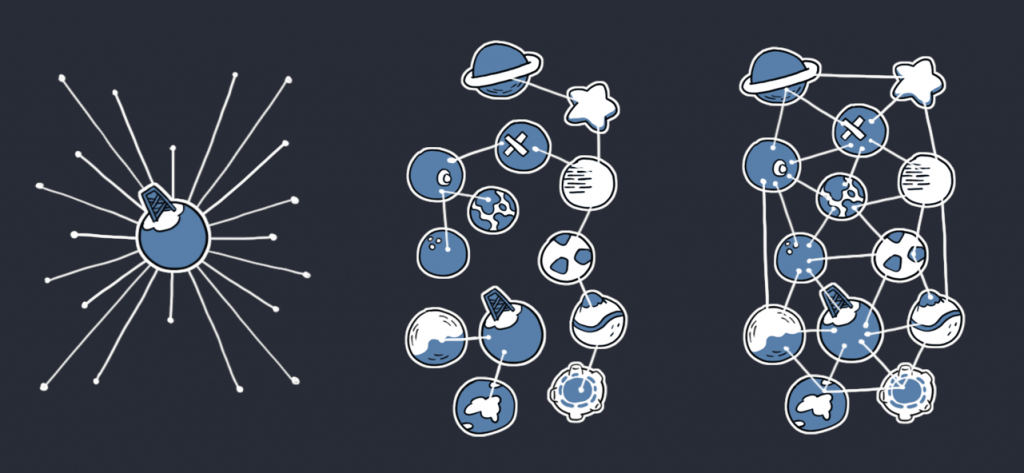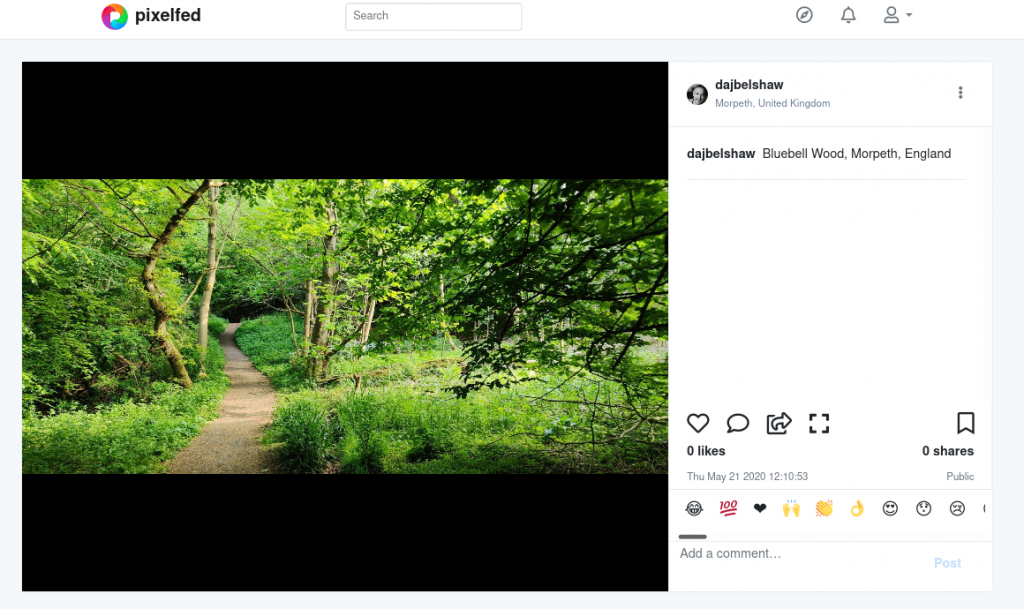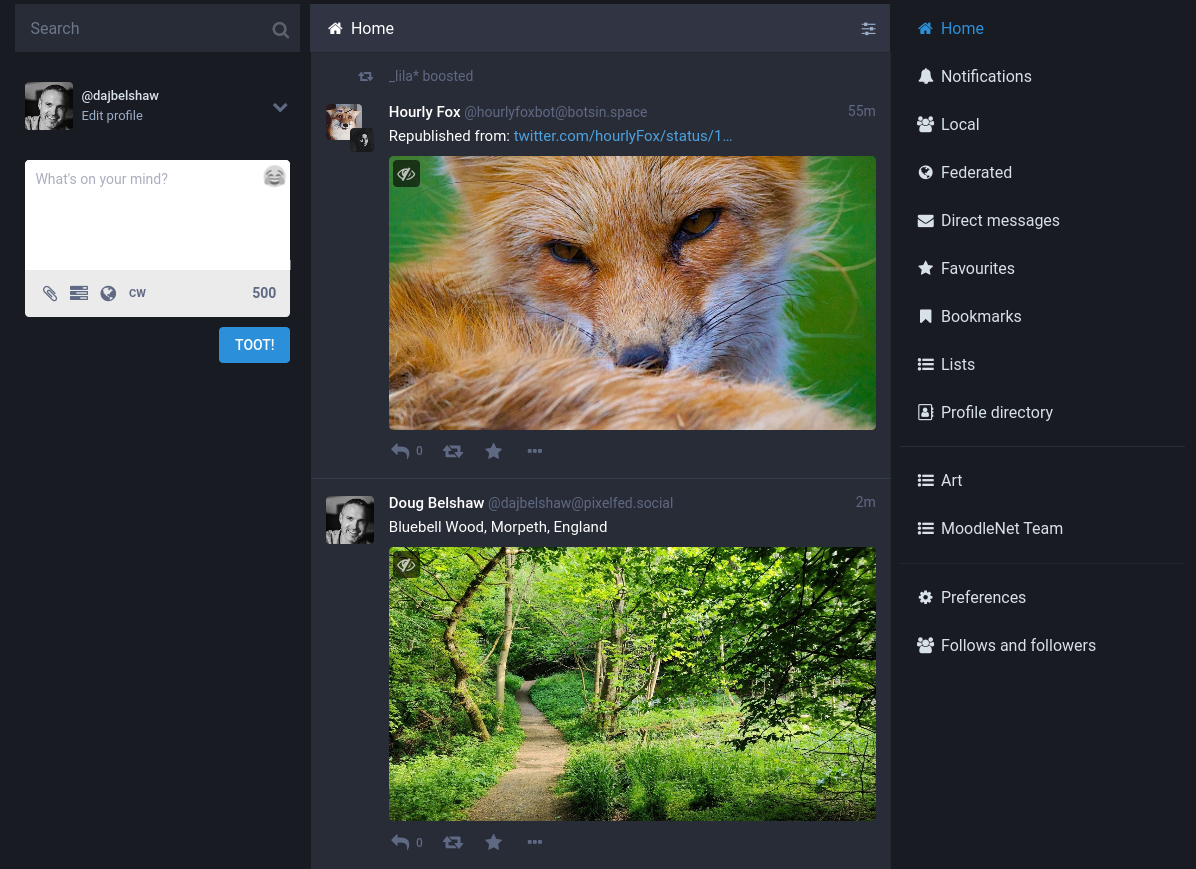The shoe that fits one person pinches another; there is no recipe for living that suits all cases
Twitter, the Fediverse, and MoodleNet
In a recent blog post, Twitter made a big deal of the fact that they are testing new conversation settings.

While some people don't necessarily think this is a good idea, I think it's a step forward. In fact, I've actually already tried out this functionality... on the Fediverse.
The Fediverse (a portmanteau of "federation" and "universe") is the ensemble of federated (i.e. interconnected) servers that are used for web publishing (i.e. social networking, microblogging, blogging, or websites) and file hosting, but which, while independently hosted, can intercommunicate with each other.
Wikipedia
That's a mouthful. Let's get to the details of that in a moment and deal with a concrete example instead. Here is a screenshot showing what Twitter has learned from Mastodon (and other federated social networks) in terms of how to make conversations better.

The Fediverse feels like a very different place to Twitter. There's a reason why you will find the marginalised, the oppressed, and very niche interests here: it's a safe space. And, despite macho right-leaning posturing, we all need spaces online where we can be ourselves.
Of course 'federation' and 'decentralisation' aren't words that most of us tend to use on a day-to-day basis. So it's important to define terms here so you can see the inherent difference between using something like Twitter and something like Mastodon.
Note: I can pretty much guarantee by 2030 you'll be using a federated social network of some description. After all, in 2007 people told me Twitter would never catch on, yet a few years later pretty much everyone was using it.)

Check out the diagram above. On the left, is the representation of a centralised platform. An example of that would be Facebook. You're either on Facebook, or you're not on Facebook. I don't use any of Facebook's products out of a concern for privacy, civil liberties, and the threat they pose to democracy. As a result, my ethical stance means that anything posted to Facebook, Instagram, or WhatsApp is inaccessible to me.It's either have an account on their servers, or you don't.
On the right of the diagram, you can the representation of a distributed social network. Here, every server has a copy of what is on every other server. This is how bittorrent works, and is great for resilience and ensuring things are fault-tolerant. There are a couple of examples of social networks that use this approach (e.g. Scuttlebutt), but they're primarily used for situations where users have intermittent internet access.
Then, in the middle is a federated social network. This is what I'm focusing on in this article. It's kind of how email works; you can email anyone else in the world no matter which email platform they use. GMail users email Outlook users email Fastmail users. Only the data you send and receive with the person you are communicating with resides on each email server; you don't have a copy of everyone in the whole network's email!
So, just as with email, federated social networks have an underlying protocol to ensure that messages from one platform can be understood, displayed, and replied to by another. Those making the platform, of course, have to bake that functionality in; Facebook, Twitter, and the like choose not to do so.
What does this mean in practice? Well, let's take three examples. The first is around 10 years ago when I decided to delete my Facebook account. That means I haven't had an account there, or been able to access any non-public information on that social network for a decade.
On the other hand, about five years ago, I ditched GMail for Protonmail because I wanted to improve the privacy and security of my personal email account. Leaving GMail didn't mean giving up having an email account.
Likewise, a couple of years ago, I decided to leave my Mastodon-powered social.coop account as I was getting some hassle. Instead of quitting the social network, as I would have had to do if this had happened on Facebook, I could quickly and easily move my account to mastodon.social. All of my settings were imported, including all of the people I was following!
An aside about moderation. What Twitter is doing with its new functionality is giving its users tools to do some of their own moderation. Other than that, the only moderation possible within the Twitter network is to 'report' tweets for spam or abuse. Moderators, acting on a network-wide scale then need to figure out whether the tweet contravened their guidelines. Having reported tweets before, this can take days and is often not resolved to anyone's satisfaction.
Contrast that with the Fediverse, where people join instances depending on a range of factors including their geographic location, languages spoken, political and religious beliefs, tolerance for profanity, and so on. Fediverse users are accessing the wider network through a server that is moderated by people they trust. If they stop trusting those moderators they can move their account elsewhere, or even host their own server.
This leads to much faster, more local, and more effective moderation. Instance-level blocking is common, as it should be. After all, you have the right to discuss with other people things I find hateful, but it doesn't mean I have to see them on my timeline.

You may be wondering about what how this looks and feels in practice. The above screenshot is from PixelFed, a federated social network that is a bit like Instagram. The difference, as I'm sure you've already guessed, is that it's federated!

Check out the two posts on my Mastodon timeline above.
The top post is an example of someone on Mastodon 'republishing' the same thing they've posted on Twitter. They've literally had to do the manual work of separately uploading the image and entering the text on each social network, and have to maintain two separate accounts.
The bottom post, on the other hand, is my PixelFed post showing up in my Mastodon feed. No extra work was involved here: anyone's Mastodon account can follow anyone's PixelFed account, and it's all down to the magic of open, federated protocols. In this case, ActivityPub.
There are many federated social networks — many more, in fact, than are listed on the Wikipedia page for Fediverse. One of my favourites is Misskey just because it's so... Japanese. You can choose whatever suits you, and everything works together.
As the Electronic Frontier Foundation said back in 2011 when writing about federated social networks:
The best way for online social networking to become safer, more flexible, and more innovative is to distribute the ability and authority to the world's users and developers, whose various needs and imaginations can do far more than what any single company could achieve.
Richard Esguerra (EFF)
As many people reading this will be aware, I have skin in this game, a dog in this fight, a horse in this race because of MoodleNet. The difference is that MoodleNet is not only a federated social network, but a decentralised digital commons. Educators join communities to curate collections of openly-licensed resources.
This poses additional design challenges to those faced by existing federated social networks. We're pretty close now to v1.0 beta and have built upon the fantastic thinking and approaches of other federated social networks. In addition, we've added functionality that is specific (at the moment, at least) to MoodleNet, and suits our target audience.
No video above? Try this!
So not so much as a 'conclusion' to this particular piece of writing as a screencast video to show you what I mean with MoodleNet, as well as the judicious use of this emoji: 🤔
Quotation-as-title from Carl Jung. Header image by Md. Zahid Hasan Joy